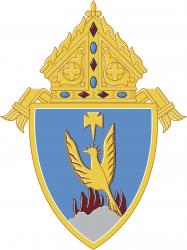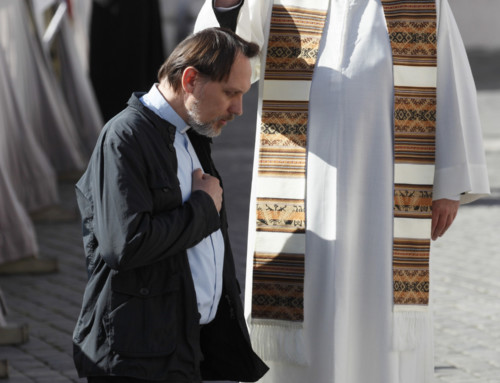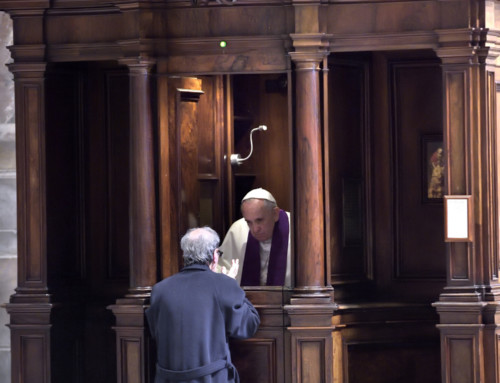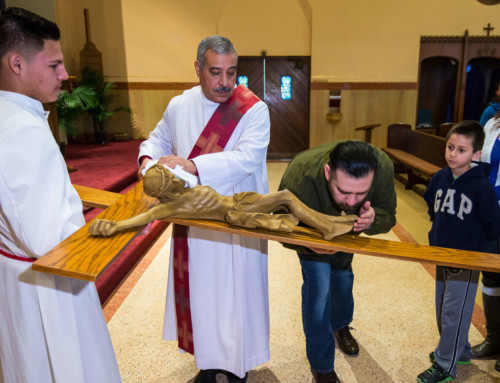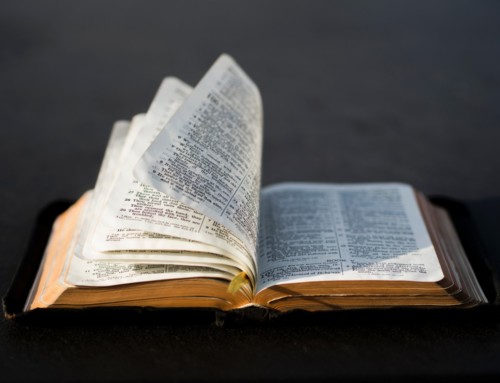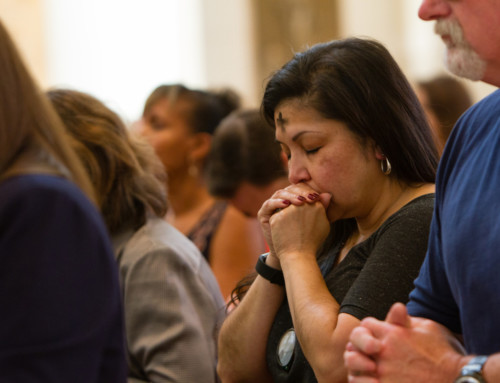By the power of the Holy Spirit, Christ is present in the proclamation of God’s Word, in the Eucharistic assembly, in the person of the priest, but above all and in a wholly unique manner in the Eucharist.
“This presence is called ‘real’—by which is not intended to exclude the other types of presence as if they could not be ‘real’ too, but because it is presence in the fullest sense: that is to say, it is a substantial presence by which Christ, God and man, makes himself wholly and entirely present” (CCC, no. 1374, citing Pope Paul VI, Mystery of Faith , no. 39).
Since the Middle Ages, the change of bread and wine into the Body and Blood of Christ has been called “transubstantiation.” This means that the substance of the bread and wine is changed into the substance of the Body and Blood of Christ. The appearances of bread and wine remain (color, shape, weight, chemical composition), but the underlying reality—that is, the substance—is now the Body and Blood of Christ.
The Real Presence of Jesus Christ endures in the consecrated elements even after the Mass is ended. Once Communion has been distributed, any remaining hosts are placed in the tabernacle. If any of the Precious Blood remains, it is reverently consumed. The hosts are reserved to provide Communion for the sick, Viaticum (Communion for the dying), and to allow the faithful to worship Christ in the reserved Sacrament and to pray in his presence. As a sign of adoration, Latin Catholics genuflect to the Real Presence of Jesus Christ in the tabernacle or genuflect or kneel when the Blessed Sacrament is exposed for prayer. Eastern Catholics show their reverence by a profound bow rather than a genuflection:
“It is for this reason the tabernacle should be located in an especially worthy place in the Church and should be constructed in such a way that it emphasizes and manifests the truth of the real presence of Christ in the Blessed Sacrament” (CCC, no. 1379).
With the passage of time, reverent reflection led the Church to enrich its Eucharistic devotion. Faith that Jesus is truly present in the Sacrament led believers to worship Christ dwelling with us permanently in the Sacrament. Wherever the Sacrament is, there is Christ, who is our Lord and our God. Such worship is expressed in many ways: in genuflection, in adoration of the
Eucharist, and in the many forms of Eucharistic devotion that faith has nourished.
The Eucharistic Liturgy contains the entire treasure of the Church since it makes present the Paschal Mystery, the central event of salvation. Eucharistic adoration and devotion flow from and lead to the Eucharistic Liturgy, the Mass.
Copyright © 2006 United States Conference of Catholic Bishops, Washington, D.C. Used with permission. All rights reserved.


